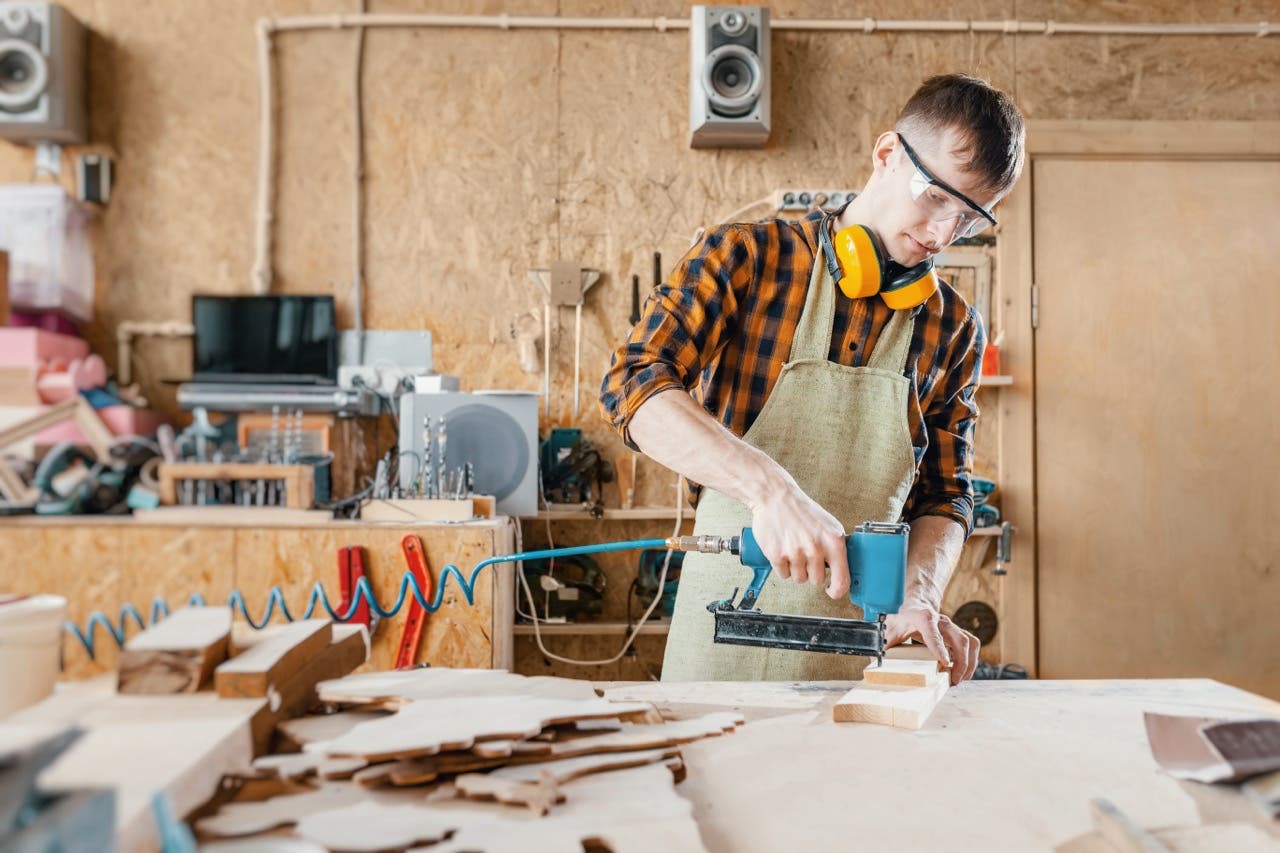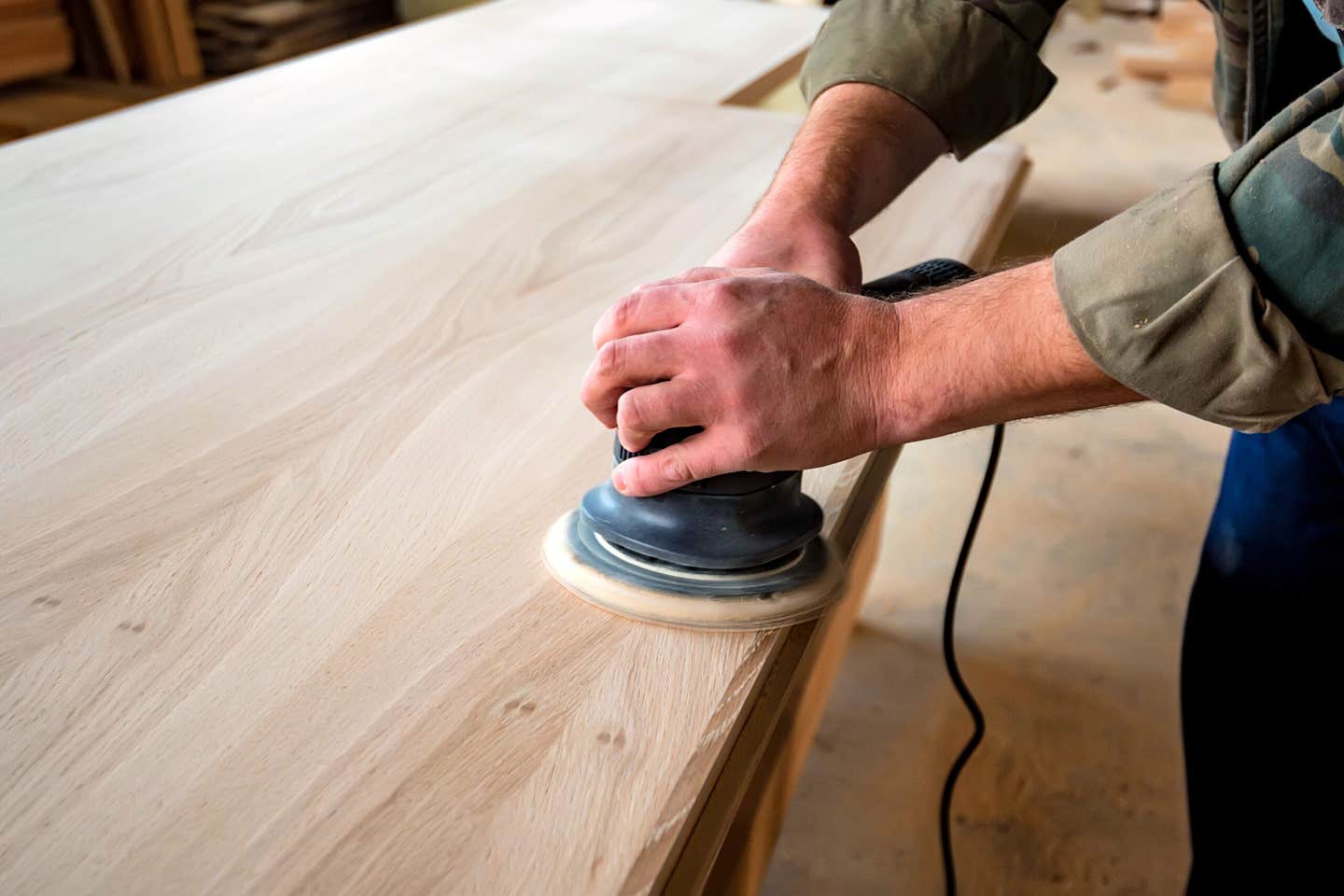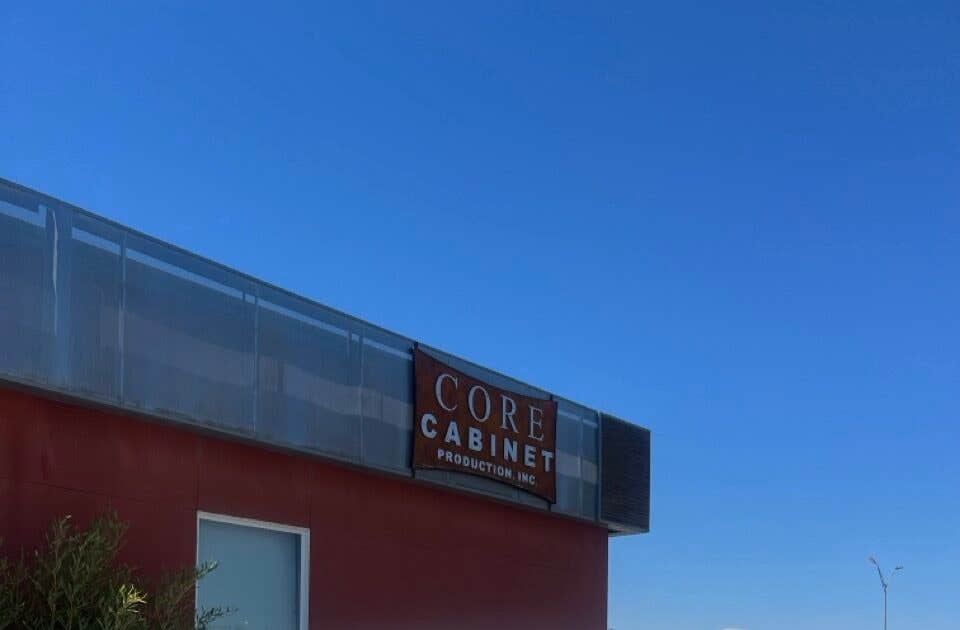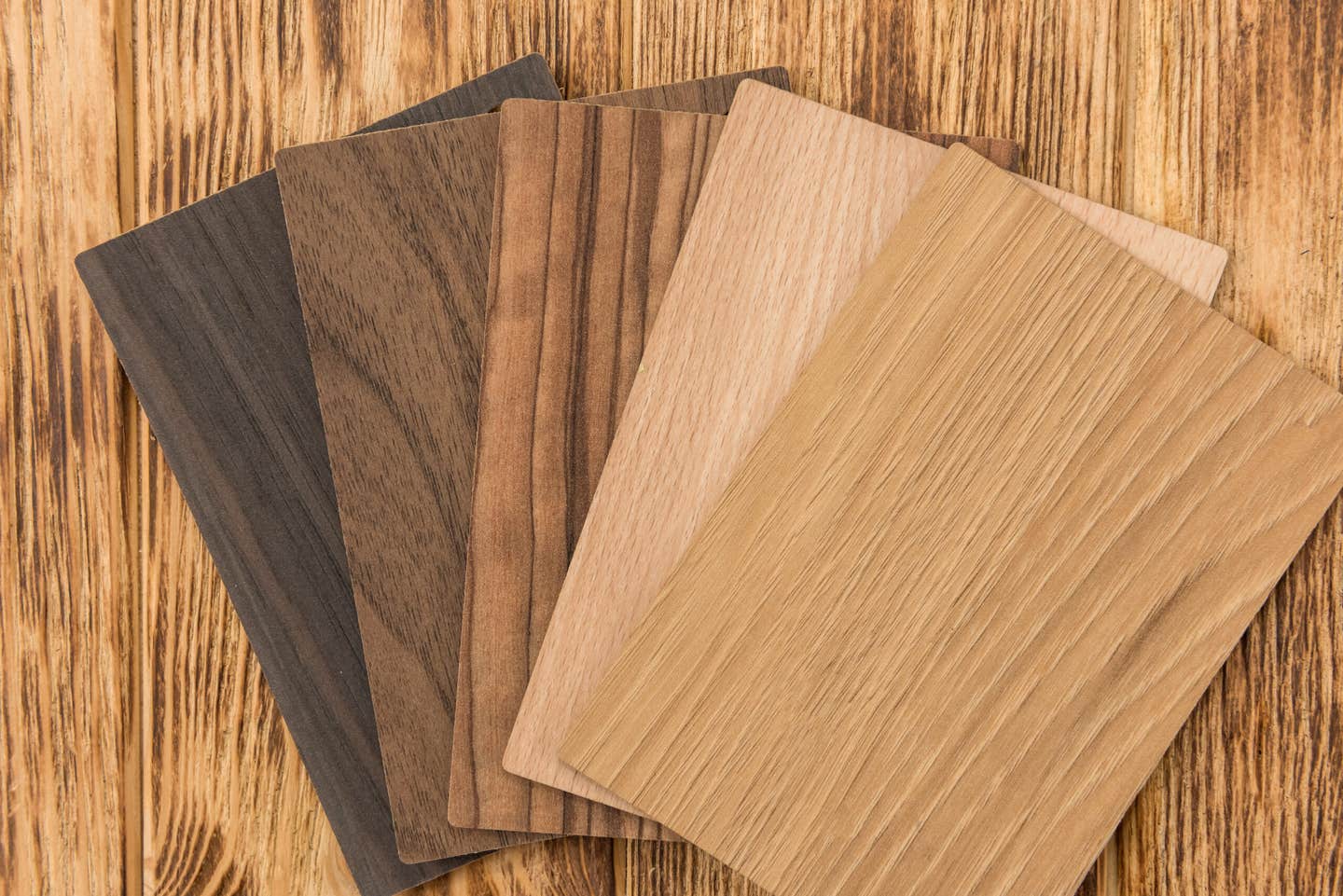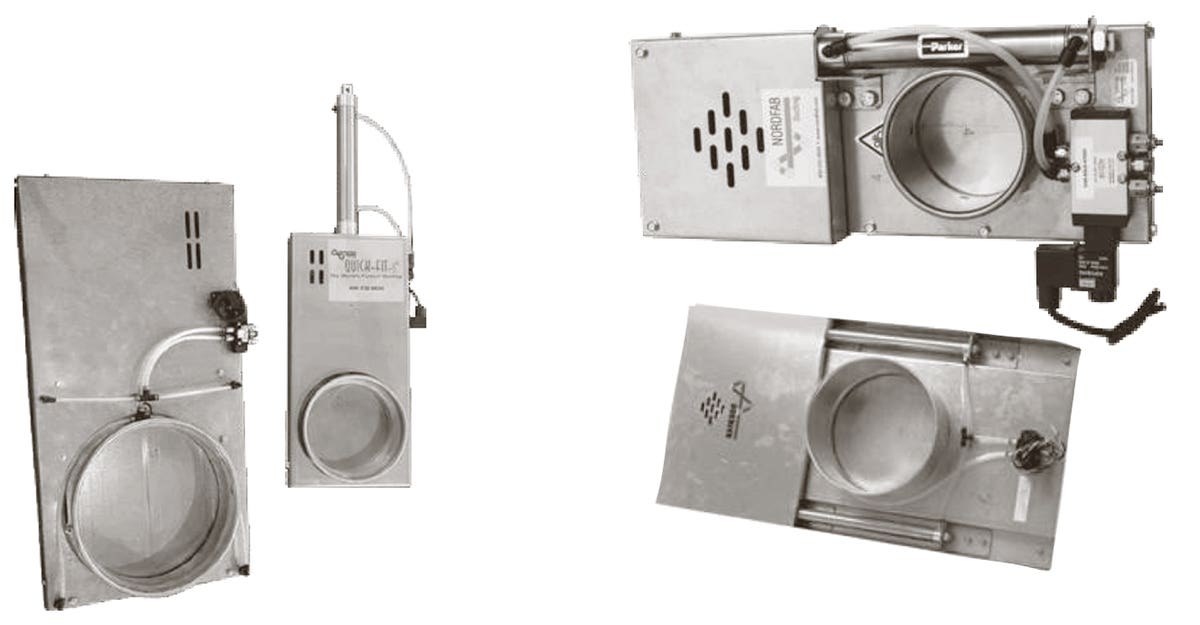Next generation materials
A roundup of the latest panel, engineered wood, countertop, lighting products and more
“There is nothing new under the sun.”
That’s paraphrasing a quote from the Book of Ecclesiastes, which Jewish tradition tells us was written by wise old Solomon in his declining years. To be frank, much of the book is about being bored. To keep himself busy, the man should have attended a trade show such as AWFS, the recent KBIS or the upcoming IWF in Atlanta. In their post-pandemic mayhem, the kitchen, closet, and bath industries have been showcasing all kinds of new things that were dreamed up, improved upon, or introduced tardily because of shutdowns and supply chain problems. Much of what’s new is a reaction to consumer taste trends, and there are also some new technology treats.
One thing that’s new and very much under the sun is Eureka MDF at CalPlant’s facility in Willows, Calif. Made from a rice straw base, it matches the performance of traditional wood MDF with excellent machinability, paintability and consistency, according to the manufacturer. It can be used to make furniture, cabinetry, doors, moldings and more. At the microscopic level, curled rice straw fibers provide Eureka with dimensional stability and strength. And because the rice straw is annually renewable and abundant, CalPlant doesn’t anticipate any raw material shortages.
Another area where there’s a lot happening is countertops. At KBIS in February there were a lot of next generation countertop options on display, some of which are quite innovative. Neolith launched its New Classtone collection of sintered stone, and the Spanish manufacturer Compac introduced a new material called Terrazzo High Performance stone that works indoors and out for countertops, walls, and other high traffic surfaces. LX Hausys America unveiled several new colors in its Viatera Quartz surface and HIMACS solid surface brands. There were eight new nature-inspired quartz surfaces from Caesarstone, and the German casework manufacturer Häcker debuted its latest innovation, PerfectSense, which is a next generation surface that combines a high-quality look with an exceptionally velvet and smooth feel. Texas-based Vadara Quartz Surfaces brought half a dozen new color options to the show too, all of which reflect the latest trends in countertop hues.
Veneers and panels
One of the most surprising takeaways from the world being cooped up for a couple of years is a sudden aversion to upper (wall) cabinets, and it will be interesting to see how suppliers handle the trend. Some solutions should be visible at IWF (iwfatlanta.com) in August. As North America’s largest woodworking trade show and conference, it will be a great place to see how designers are increasingly creating kitchens with only base cabinets, and then finding imaginative solutions elsewhere to make up for lost storage. The lack of uppers means there are a lot more walls that need treatments, including extensive backsplash areas.
The industry has been offering several new versions of old materials to cover these vast voids and offer some visual interest. Options so far include exterior siding, sheets of metal (copper and rusty galvanized are popular), and large slabs of wood, marble, quartz, granite, and colored glass, but there are lots of options among recently developed products, too.
For example, when customers want both natural finishes and a splash of color, dye-infused veneered panels such as Rainbowood from FormWood might fit the bill. This natural wood veneer uses an exclusive process to extract natural tones from real wood and replace them with luminous color, while the rich wood grain remains. The color is always consistent, and the veneer requires only a natural sealer or topcoat finish.
Echo Wood from Hardwood Distributors Inc. is an environmentally responsible alternative that produces architectural veneers that are defect-free and consistent in color and grain, according to the company. Using computer-aided design technology, HDI manipulates common and certified wood fiber to reproduce the natural appearance of nearly any wood species. The entire collection of Echo Wood engineered veneer is available FSC certified.
Lenderink Technologies offers Engineered Core Veneer, a special board for bentwood and 3D molded parts. This is a Certified Green product (FSC certification is available) that comes in thicknesses from 0.05” to 0.375”, up to 8’ wide, and up to 20’ long. The company says it’s easy to machine, stain and finish, and it’s bendable and flexible until laminated so curved walls shouldn’t be a problem.
Many customers are beginning to opt for imaginative wall treatments such as frescoes, murals, and textures, while other are choosing the calm effects of muted light pastel paint. Most of the major paint companies have chosen gray and light green pastels as its colors of the year. As for all that lost storage, old fashioned built-in breakfast nooks are making a comeback and many designers are suggesting extra islands in a bid to go lateral rather than vertical. Walls of shelves behind sliding barn doors are also finding a home in kitchens, pantries, entry vestibules and other rooms close to the kitchen. And those barn doors are getting a tweak, too – rather than traditional battens and braces, they seem to be trending toward large, completely flat panels with touch controls and little or no visible hardware.
Colorful cabinets are trending, and manufacturers are offering all kinds of new materials here. One-piece high-density fiberboard (HDF) door blanks have been around a while because they’re a superb paint or foil substrate as they’re flat, smooth and stable. What’s new here is that outsourcing suppliers and custom shops are finding ways to deliver much finer details including sharp inside corners and small molding profiles, so the finished doors look more like a high-end, five-piece construction.
Curves are hot, especially on the ends of islands. Kerfkore has responded with a catalog of lightweight sandwich panels. These are three-layer structures with the two outside layers of a thin, rigid material and a middle layer of a thicker but very lightweight material. The outside layers provide durability, and the inside layer keeps the panel lightweight, creating an easily customizable and adaptable building element, according to the company.
Kerfkore also offers Italian Bending Poplar Plywood, a flexible 1/8″ material that can be formed into curves and radii to provide a smooth face surface. It can be used painted, stained, laminated, or even left unfinished.
Ultralite MDF from Uniboard is manufactured using 100-percent softwood fibers, resulting in a lightweight, workable panel with a light, uniform and natural looking color. It offers the stability and surface smoothness of regular MDF but weighs one third less, the company said.
Offering resistance
There’s a new exterior MDF from Roseburg called Armorite that resists rot, decay and insect damage, according to the company. It is at home in bathroom cabinetry, countertops, exterior signage, garage doors, non-structural paint-grade millwork, outdoor kitchens, and even shutters. Manufactured at the company mill in Medford, Ore., it meets or exceeds ANSI A208.2 Grade 130 and MR50 moisture resistance. Armorite comes in nominal 4’ and 5’ widths and lengths up to 18’, with thicknesses from 1/4” to 1-1/4”.
Mirlux has a new Premium Panel with a Polyethylene Terephthalate surface, available with a high gloss or super matte finish. The company says it’s scratch, impact, water and stain resistant, and less expensive than acrylic.
Last May, Pennsylvania-based Grothouse introduced Anvil metal finish that can be applied to any wood countertop. It imitates metal countertops in look and function but can be used in curved profile applications and complex shapes that were not previously possible when using sheet metal products. Anvil surfaces are exterior rated when combined with exterior substrates, which is a departure from many real metal countertops.
Woodshops looking to add other metal-coated details to components such as turned accents or range hoods might like to check out MakeItMetal. The company is based in Ontario and uses metal veneer coating on a variety of surfaces such as wood and MDF to create the look, texture and feel of real metal. The process makes it possible to coat turned forms and architectural elements. Sheet stock is available, too, and it can be worked with standard woodworking tools. Metal coating opens up some interesting design options, and it’s much more cost effective and environmentally responsible than using traditional sheet metal or metal laminates, plating, or casting. It can be used on both interior and exterior surfaces. In addition to doing the coating at their facility, the company offers both in-person and virtual training.
Doors and drawers
Elias Woodwork & Mfg. has introduced the Precision Series of doors and drawer fronts, which are slim frame Shaker doors with a very narrow frame fixed to a 3/4” thick panel. They can be customized in terms of size, species and finishing options. And for woodshops that prefer working with Thermofoil, Elias also offers the Amity door, which is an RTF Shaker door option with a 1” frame.
WalzCraft is a large outsourcing supplier that has added Continuous Bead Applied Molding door and drawer front options to its catalog. These are made by applying a solid wood beaded molding to a veneered panel with an MDF Core. The solid wood molding hides the raw edge of the veneered panel. Made to order, they are available in a variety of wood species and finishes. They add texture, a little drama and some visual impact to cabinets, bathroom vanities and other furniture.
Element Designs showcased its new aluminum-frame glass cabinet doors at KBIS, including model AF016 that lets a designer create tall doors up to 96”. This is a narrow frame door with glass overlay that’s available in 12 finishes. Model AF210 lets a cabinetmaker offer a client the option of double-sided inserts that are perfect for vanity or closets/storage applications where one sees mirror or back-painted glass on the front, and a mirror that can be used from the back when the door is open. Element has also introduced DecoLuxe solid color doors and fronts made from recycled acrylic.
When discussing next generation materials, lighting doesn’t usually spring to mind. But Tresco Lighting has introduced Snip, which is a paper-thin LED panel lighting product that should be of interest to furniture makers. The company says Snip has the flexibility to conform to curved surfaces or wrap around objects for continuous, even illumination with the same high light output as the manufacturer’s popular Snap panels. Sold in 24” x 9” panels, the extremely lightweight LED sheets can be snipped into 3” x 3” squares and re-connected into any custom configuration with FlexConnect connectors. There’s no soldering required. A strong 300 LSE 3M adhesive backing allows for easy peel-and-stick installation, which is ideal for illuminating tight spaces and backlighting translucent surfaces. Snip is a 24-volt DC system for indoor use.
From lighting to counters, doors or sheet stock, the only way to really assess new materials is to touch them. Thankfully, the trade shows are all coming back in person, and they give us all a chance to physically meet the next generation of cabinet and furniture materials.
This article was originally published in the April 2022 issue.



